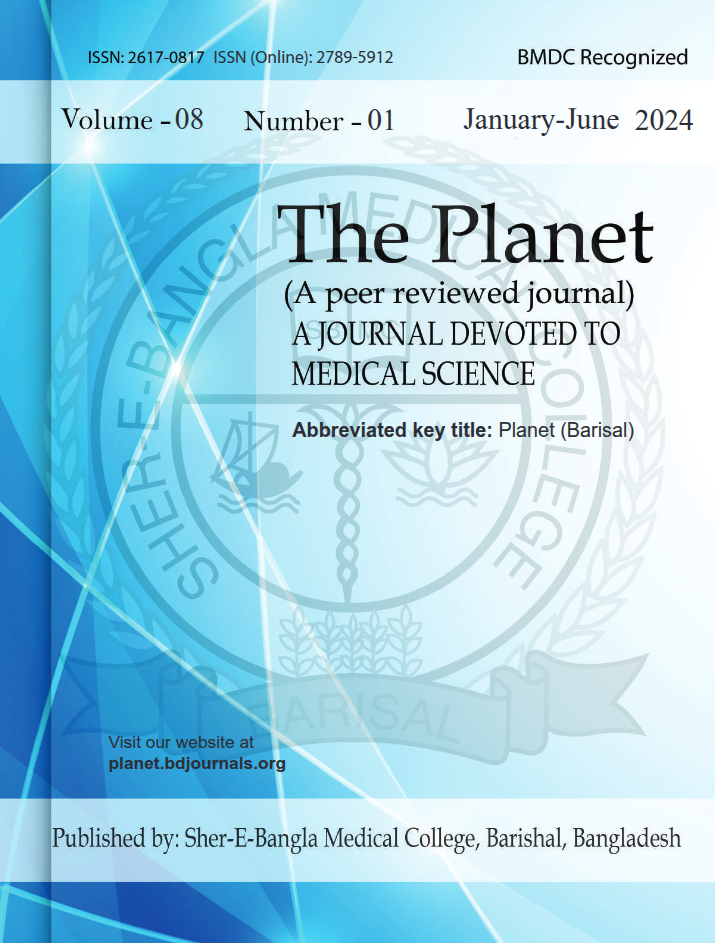Published 28-12-2024
Keywords
- Severe Hypercholesterolemia,
- Cardiovascular Risk,
- Cholesterol Level and Outcome
Copyright (c) 2024 The Planet

This work is licensed under a Creative Commons Attribution 4.0 International License.
How to Cite
Abstract
Introduction: Severe hypercholesterolemia (SH), defined by LDL-C levels ≥190 mg/dL, is a major risk factor for atherosclerotic cardiovascular disease (ASCVD) and a global health challenge. It can result from genetic conditions like familial hypercholesterolemia (FH) or secondary causes, such as metabolic disorders and hypothyroidism. Early identification through lipid screening is crucial, especially for those with a family history of cardiovascular events. Despite advances in therapy, many patients fail to achieve target LDL-C levels, highlighting the need for improved risk assessment and tailored interventions. Aim of the study: This study aims to evaluate the clinical profile, treatment patterns, and cardiovascular outcomes of patients with severe hypercholesterolemia. Methods & Materials: This cross-sectional observational study was conducted at Department of Cardiology, M Abdur Rahim Medical College Hospital, Dinajpur, Bangladesh from January to December 2024 to evaluate the clinical profile and outcomes of 100 patients with severe hypercholesterolemia (LDL-C ≥190 mg/dL). Eligible patients were screened at cardiology, endocrinology, or lipid clinics, and detailed data on demographics, clinical history, laboratory tests, and cardiovascular risk assessments were collected. Exclusion criteria included secondary hypercholesterolemia, incomplete records, and pregnancy. Data on treatment adherence and clinical outcomes were tracked over 12 months. Result: The study included 100 participants (average age 52.4 years, BMI 26.9 kg/m²), with a predominance of males (63%). A significant portion had comorbidities such as hypertension (61%), diabetes (44%), and a family history of cardiovascular disease (39%). Clinical presentations included high cholesterol (average total cholesterol 326.5 mg/dL) and lipid abnormalities. Most received statin therapy (88%) with additional treatments like ezetimibe (54%) and PCSK9 inhibitors (9%). Over 14.5 months, 62% had no cardiovascular events, while 38% experienced events such as myocardial infarction (15%) and stroke (8%). The mortality rate was 5%, and 19% required hospitalization. Conclusion: Severe hypercholesterolemia in Bangladesh is associated with high comorbidity rates, including hypertension, diabetes, and premature cardiovascular disease. Despite statin use, treatment adherence is low, and LDL-C levels remain elevated, emphasizing the need for more aggressive treatments and better access to advanced therapies like PCSK9 inhibitors and ezetimibe.



